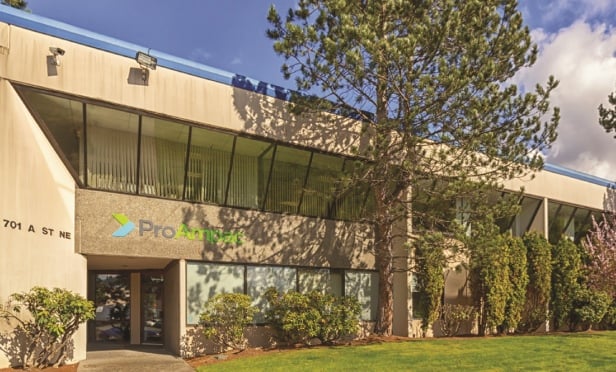The commercial real estate industry is continuing its unparalled boom with increased investment and development activity, primarily in the core markets of San Francisco, New York, Boston, Miami, Chicago, Dallas, Houston, Seattle and Los Angeles. So says Joseph J. Ori, executive managing director of Paramount Capital Corp. and Adjunct Professor of Finance at the University of Phoenix.
“There is also an abundance of investment activity in the acquisition of large property portfolios and small capitalization REITs in going private transactions,” he says. “This booming activity since 2012 has produced another bubble in the CRE industry, similar to what occurred in the industry from 2003-2007 and before the Financial Crash that began in 2008, but with a greater overvaluation.”
Ori takes a close look at the mispricing of assets in this exclusive commentary below. The words expressed below are the author's own.
The overvaluation of CRE assets today, has primarily been caused by the Federal Reserve's quantitative easing and zero interest rate policy, that has been in effect since December 2008. The Fed has lowered short term interest rates to artificial levels, which lowers the cost of capital and raises asset prices. This artificial cost of capital leads to massive mispricing of CRE and other assets.
For example, a new class A apartment complex will sell today at a cap rate of 4%, when the normal risk adjusted cap rate should be in the range of 5%-6%. Assuming the property has a net operating income of $3.5 million, the value at a 4% cap rate would be $87.5 ($3.5M/4%) million and the value at a 5% cap rate would be $70 million ($3.5M/5%). The difference in value of $17.5 million, is the mispricing of the apartment complex due to zero interest rates and the unrealistic cost of capital. The buyer of the apartment at the 4% cap rate may get lucky and sell it for the same cap rate in a few years and earn a solid return. However, if rates rise and the terminal cap rate is higher due to an increase in interest rates to 5% or 6%, the levered return on equity will be in the low single digits. Seventy percent of the return in a CRE deal held for five or seven years is from the terminal value, while 30% is derived from the annual cash flows. A poor levered return for a commercial real estate investment.
The poster child for the overvaluation of CRE assets is San Francisco, CA and the entire Bay Area. Newer class A office buildings and apartment complexes in the Bay Area are trading at 3.5%-4% capitalization rates, which is equivalent to buying an operating company at an EBITDA multiple of 25 to 28 times. An EBITDA multiple of 25-28 times is three times the typical multiple in which companies trade. In addition to the Feds policy, the technology industry that propels the Bay Area economic engine, has been on an unprecedented growth binge, which has resulted in elevated demand for office space and apartments, to house their current and future workforce. However, the bubble in the Bay Area is beginning to deflate as the over optimistic growth projections of the public tech companies as well as the private venture capital funded unicorns are being reduced to more realistic and conservative levels.
A number of tech companies have already announced or completed layoffs including, Hewlett Packard, Yelp, Zynga, Twitter, Zillow, Ebay, Yahoo, PayPal and many others. Although, the Bay Area market will probably not crash like it did in 2000 after the dot.com bubble, it will certainly contact to more normal levels of real estate valuation and corporate growth.
The most overpriced of all assets including stocks, bonds and alternatives are new class A urban hi-rise apartment complexes.
The mispricing of CRE and other assets should be a major concern to CRE sponsors, manager and investors. Billions of dollars are still flowing into REITs, CRE funds and acquisitions and participants should be wary of this asset overvaluation.
© Touchpoint Markets, All Rights Reserved. Request academic re-use from www.copyright.com. All other uses, submit a request to [email protected]. For more inforrmation visit Asset & Logo Licensing.







